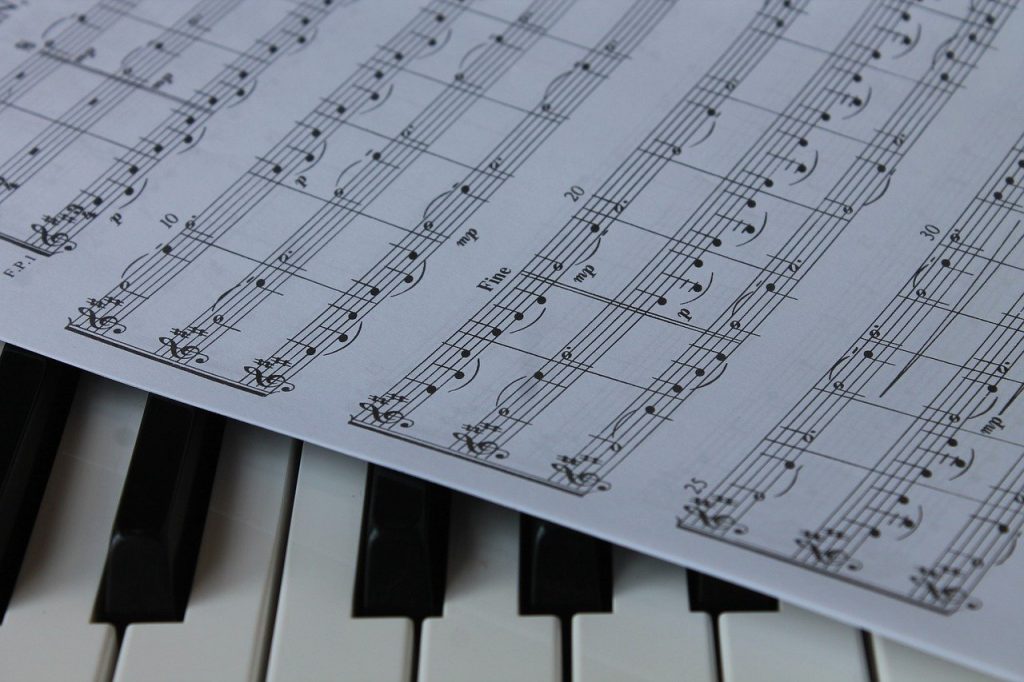You may be surprised to know that there are different musical terms for the same musical concepts and ideas in different parts of the world. While the language of music is universal, as societies evolve and change, their dialects inevitably change as well.
Such is the case between British and American musical terms. It’s fascinating to explore the divergences in terminology that have evolved on either side of the Atlantic. Join us as we explore the key differences between British and American musical terms and an interesting layer to our growing musical lexicon.

Why are there different naming systems?
The divergence in musical terms between British and American traditions can be attributed to historical, cultural, and linguistic influences that have shaped each musical landscape. The roots of these distinctions often trace back to the early development of musical notation and the subsequent evolution of music education on either side of the Atlantic.
Historical events, regional dialects, and the influence of prominent music theorists have all played a role in shaping the unique naming systems we observe today. As we delve into the intricacies of “British vs American Musical Terms,” it becomes evident that these differences are not arbitrary but rather reflections of the rich tapestry of musical history woven across the ages.
Note values
A fundamental element in this divergence is the naming of notes based on their duration. While the fundamental principles of rhythm remain consistent, the nomenclature introduces an element of nuance and regional flavor. Musicians, whether learning from sheet music or engaging in collaborative performances, find themselves navigating these terminological variations.
Understanding these distinctions becomes particularly relevant for musicians collaborating across borders, emphasizing the importance of a shared understanding of musical language. It also serves as a reminder of the ever-evolving nature of language within the artistic realms, where cultural influences shape the very vocabulary that musicians use to communicate the timeless beauty of sound.
American musical terms
In the American musical system, the quarter note represents a foundational unit of time, dividing a measure into four equal parts. Moving to smaller subdivisions, the eighth note signifies half the duration of a quarter note, and the sixteenth note further divides the beat into four equal parts.
British musical terms
Conversely, British musicians utilize distinct terms for these note values. The quarter note equivalent is referred to as a “crotchet,” reflecting a term derived from Middle English. The eighth note transforms into a “quaver,” and the sixteenth note becomes a “semiquaver.” This linguistic variance adds a layer of cultural and historical richness to the act of reading and interpreting musical notation.
| American Term for Note | British Term for Note | |
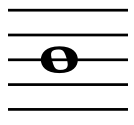 | Whole Note | Semibreve |
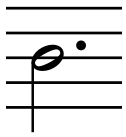 | Dotted Half Note | Dotted Minim |
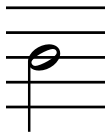 | Half Note | Minim |
 | Quarter Notes | Crotchet |
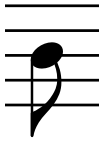 | Eighth Note | Quaver |
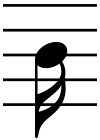 | Sixteenth Note | Semiquaver |
Rest values
In the silent interludes that punctuate musical compositions, the terminology for the rest symbol in music reveals another layer of distinction between British and American musical languages. Rests, crucial in shaping the pauses and silences within a piece, carry their own set of names that differ across these traditions.
Understanding the terminology for rest values is not only a matter of practicality for musicians but also an exploration of the cultural and historical influences embedded in these names. The silent beats and moments of repose in a musical score, though devoid of audible sound, echo with the nuances of regional expression.
American musical terms
Within the American musical framework, the quarter rest, eighth rest, and sixteenth rest denote pauses of varying durations. A quarter rest, for instance, signifies a silence lasting one quarter of a whole note, while an eighth rest represents half the duration of a quarter rest.
British musical terms
In the British musical lexicon, the equivalent terms for these rests are the crotchet rest, quaver rest, and semiquaver rest. Similar to note values, the names draw from historical linguistic roots, contributing to the distinctiveness of British musical terminology.
| American Term for Rest | British Term for Rest | |
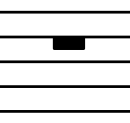 | Whole Rest | Semibreve Rest |
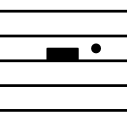 | Dotted Half Rest | Dotted Minim Rest |
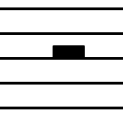 | Half Rest | Minim Rest |
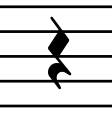 | Quarter Rest | Crotchet Rest |
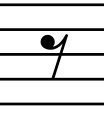 | Eighth Rest | Quaver Rest |
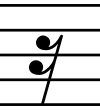 | Sixteenth Rest | Semiquaver Rest |
Intervals and scale degrees
The language of intervals and scale degrees forms the harmonic foundation of music, yet the terminology used to describe these essential elements varies between British and American musical traditions. Understanding how musicians on either side of the Atlantic articulate the relationships between notes provides insights into the unique flavor each tradition imparts to the world of melody and will help enrich your musical knowledge as you learn how to play piano.
American musical terms
In the American system, intervals are commonly expressed using numerical terms. For example, the distance between the first and fifth notes of a scale is referred to as a “fifth.” Scale degrees are often labeled using numbers, with the tonic as the first degree. This numerical approach provides a clear and systematic method for musicians to communicate the spatial relationships within a musical passage.
British musical terms
Conversely, British musicians often use a combination of numerical and solfège-based terms. The interval between the first and fifth notes, for instance, might be described as a “perfect fifth,” incorporating the solfège tradition. Additionally, scale degrees are frequently labeled using solfège syllables, such as “tonic,” “supertonic,” and so forth. This combination of numerical precision and solfège tradition contributes to the distinctive British approach to describing musical intervals.
Cadences
Cadences serve as the concluding statements that shape the tonal resolution of a piece. The terminology used to describe these essential harmonic progressions varies between British and American musical vocabularies, offering a glimpse into the nuanced ways musicians express the closure and finality of musical phrases.
American musical terms
Within the American musical tradition, cadences in music are often labeled with descriptive terms such as “authentic,” “plagal,” or “deceptive.” These terms communicate both the quality and character of the harmonic resolution. For example, an “authentic cadence” signifies a conclusive and final resolution, typically involving a dominant to tonic progression. The terminology emphasizes the emotional impact of the cadence on the listener.
British musical terms
In the British musical lexicon, the terminology for cadences aligns with a blend of descriptive and functional terms. For instance, the “perfect cadence” in Britain mirrors the “authentic cadence” in the American system, indicating a strong and conclusive resolution. Additionally, the British tradition incorporates functional labels like “tonic,” “dominant,” and “subdominant” to describe the harmonic relationships within a cadence, providing a comprehensive view of the tonal landscape.
Exploring the differences in cadential terminology not only enhances a musician’s ability to articulate the emotional impact of a musical passage but also reveals the historical influences that have shaped each tradition.
Other musical terms
Beyond the realms of note values, piano intervals, and cadences, the lexicon of music unfolds with a plethora of additional terms that color the language of musicians. The differences in terminology between British and American musical traditions extend to a wide array of descriptors, markings, and instructions that guide performers through the nuances of a composition.
Dynamic markings
Expressions of volume and intensity, known as dynamic markings in music, showcase nuanced distinctions between the two traditions. While terms like “piano” and “forte” are universally recognized, the use of additional markings like “mezzo” or “crescendo” may vary in frequency or emphasis.
Tempo markings
The pacing of a musical piece, indicated by tempo markings, also exhibits terminological differences. Whether it’s the speed of a lively passage or the gradual slowing of a decrescendo, the choice of words such as “allegro” or “adagio” can reflect cultural preferences in musical interpretation.
Articulation and ornamentation
The subtleties of articulation and ornamentation, which add character and expressiveness to a musical phrase, often carry distinct names in British and American contexts. From staccato and legato to trills and grace notes, the terminology used to convey these nuances may vary, contributing to the stylistic interpretation of a piece.
Form and structure
Even in discussing the overarching structure of a musical composition, terms like “sonata form” or “rondo form” may be approached with unique linguistic perspectives, shaping how musicians conceptualize and communicate the architecture of a piece.
As we delve into the expansive world of “British vs American Musical Terms,” exploring these additional musical descriptors enriches our understanding of the intricate conversations that occur between composers, performers, and audiences. The varied terminology not only reflects cultural nuances but also underscores the shared pursuit of artistic expression that transcends geographical boundaries.
Explore the wide world of music
From the foundational concepts of note values and intervals to the expressive cadences that punctuate melodic narratives, the subtle differences between British and American musical terms reflect the cultural and historical influences that have shaped each musical tradition. Whether you are learning in person or with online piano lessons, exploring the lesser-known nuances of various musical traditions and niches will only serve to enhance your understanding and knowledge of the world of music.
Author of this blog post:
Susana Pérez Posada

With over seven years in piano education and a deep passion for music therapy, Susana brings a unique blend of expertise to Skoove. A graduate in Music Therapy from SRH Hochschule Heidelberg and an experienced classical pianist from Universidad EAFIT, she infuses her teaching with a holistic approach that transcends traditional piano lessons. In her writings for Skoove, Susana combines her rich musical knowledge with engaging storytelling, enriching the learning experience for pianists of all levels. Away from the piano, she loves exploring new places and immersing herself in a good book, believing these diverse experiences enhance her creative teaching style.
Edited and fact checked by Eddie Bond, multi-instrumentalist performer, composer, and music instructor
Published by Lydia Hovan from the Skoove team







